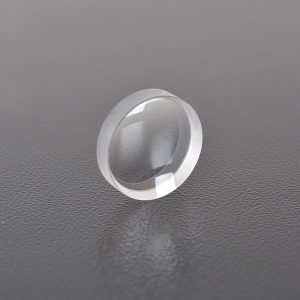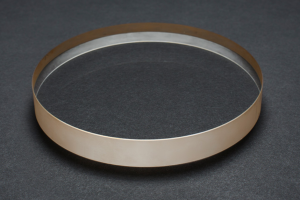
Concave Lens Processing: Principles and Processes
Concave lens is a common optical element with a concave surface that can diverge parallel light. Concave lenses are widely used in optical systems, such as glasses, telescopes, microscopes, camera lenses, etc. This article will introduce the processing principle, process flow and application fields of concave lenses in detail.
1. Basic principles of concave lenses
Concave lenses are negative lenses with thinner central parts than edges. When parallel light passes through a concave lens, the light diverges outward as if it comes from the virtual focus on the other side of the lens. The focal length of a concave lens is negative, indicating its ability to diverge light. The shape of a concave lens is usually biconcave, plano-concave or convex-concave (meniscus), and the specific shape depends on its application requirements.
2. Processing technology of concave lenses
The processing of concave lenses involves multiple steps, including material selection, rough processing, fine processing, polishing, coating, etc. The following are the main process flows of concave lens processing:
1. Material selection
The material of a concave lens is usually optical glass or optical plastic. Optical glass has high transmittance, low dispersion and good mechanical properties, and is suitable for high-precision optical systems. Optical plastics have the advantages of light weight, low cost, and easy processing, making them suitable for mass production.
2. Rough machining
Rough machining is the process of cutting raw materials into blanks that are close to the final shape. This step usually uses diamond cutting tools or laser cutting technology to ensure that the size and shape of the blanks meet the design requirements.
3. Finishing
Finishing is the process of machining the blanks into precise concave shapes through grinding and lapping technology. This step uses high-precision grinders and lapping tools to ensure that the curvature and thickness of the lens surface meet the design requirements.
4. Polishing
Polishing is a key step in improving the surface finish of the lens. By using polishing powder and polishing pads, tiny scratches and defects on the surface of the lens are removed to make its surface optically smooth.
5. Coating
Coating is to improve the optical properties of the lens, such as increasing transmittance and reducing reflectivity. Common coating materials include magnesium fluoride, silicon dioxide, etc. The coating process is usually carried out in a vacuum environment to ensure the uniformity and adhesion of the film layer.
6. Inspection and correction
After processing, the lens needs to undergo rigorous optical inspection, including measurement of parameters such as curvature, thickness, and surface finish. If deviations are found, they can be corrected by further grinding and polishing.
3. Application fields of concave lenses
Concave lenses are widely used in many fields. The following are some typical application scenarios:
1. Glasses
Concave lenses are used to correct myopia. By diverging light, the light forms a clear image on the retina.
2. Optical instruments
In optical instruments such as telescopes and microscopes, concave lenses are used to adjust the light path and improve the image quality.
3. Photographic lenses
Concave lenses are used in photographic lenses to control the divergence and focusing of light, helping photographers achieve ideal shooting effects.
4. Laser technology
In laser systems, concave lenses are used for beam expansion and collimation to ensure the stability and directionality of laser beams.
5. Projectors
Concave lenses are used in projectors to adjust the divergence angle of light to ensure the clarity and brightness of projected images.
4. Future Development of Concave Lens Processing
With the continuous advancement of optical technology, the processing technology of concave lenses is also constantly improving. In the future, concave lens processing will develop in the direction of higher precision, higher efficiency and more environmental protection. For example, adopt advanced CNC processing technology to improve processing accuracy and efficiency; develop new optical materials to improve the optical performance of lenses; promote green processing technology to reduce environmental pollution during processing.
Conclusion
As an important component in the optical system, the processing technology of concave lenses directly affects the performance of the optical system. By continuously optimizing the processing technology and improving the accuracy and performance of lenses, concave lenses will play an important role in more fields and promote the further development of optical technology.
Hanzhong Brisun Optics Co., Ltd. Is the high precision optical element manufacturer provides customized production of Various optical lenses, including spherical lens, cylindrical lens, optical window, mirror, prism, filter, metal base mirror and other high-precision optical elements. The base materials include various optical glass, fused quartz, calcium fluoride (CaF2), zinc selenide (ZnSe), germanium (GE), silicon (SI), sapphire, metal and other materials. And provide antireflective film, high reflection film, spectroscopic film, metal film and other optical coatings.
Welcome to OEM and Purchasing!


